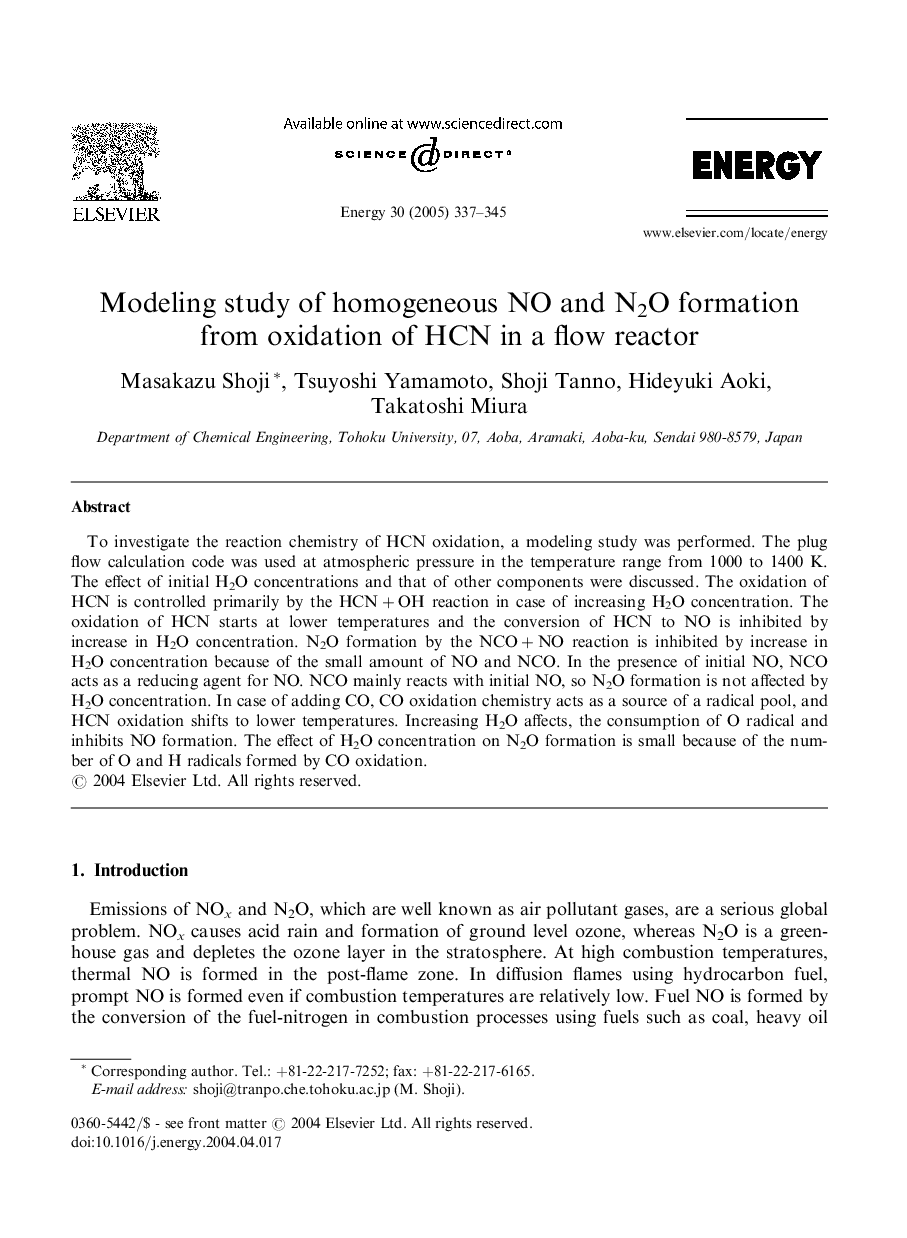| Article ID | Journal | Published Year | Pages | File Type |
|---|---|---|---|---|
| 9825061 | Energy | 2005 | 9 Pages |
Abstract
To investigate the reaction chemistry of HCN oxidation, a modeling study was performed. The plug flow calculation code was used at atmospheric pressure in the temperature range from 1000 to 1400 K. The effect of initial H2O concentrations and that of other components were discussed. The oxidation of HCN is controlled primarily by the HCN+OH reaction in case of increasing H2O concentration. The oxidation of HCN starts at lower temperatures and the conversion of HCN to NO is inhibited by increase in H2O concentration. N2O formation by the NCO+NO reaction is inhibited by increase in H2O concentration because of the small amount of NO and NCO. In the presence of initial NO, NCO acts as a reducing agent for NO. NCO mainly reacts with initial NO, so N2O formation is not affected by H2O concentration. In case of adding CO, CO oxidation chemistry acts as a source of a radical pool, and HCN oxidation shifts to lower temperatures. Increasing H2O affects, the consumption of O radical and inhibits NO formation. The effect of H2O concentration on N2O formation is small because of the number of O and H radicals formed by CO oxidation.
Related Topics
Physical Sciences and Engineering
Energy
Energy (General)
Authors
Masakazu Shoji, Tsuyoshi Yamamoto, Shoji Tanno, Hideyuki Aoki, Takatoshi Miura,
